Council Members Move to Strip Their Names from Taxpayer-Funded Ward Events
Committee advances policy removing council member branding from $525,000 program while debating election-year restrictions.
In 1933, Riverside's streets burst into vibrant citrus pride with the Navel Orange Pageant Parade, an ambitious attempt to rival Pasadena’s famed Tournament of Roses.

Riverside and oranges have a long and close relationship. In 1871, only one year after Riverside was founded, L. C. Waite bought four orange seedlings in Los Angeles and brought them to Riverside. K. D. Shugart planted the first one near his home at Mulberry and Ninth Streets. Two years later, in 1873, Eliza Tibbets planted the two original parent navel orange trees in her yard. The gigantic multi-million-dollar orange industry in Riverside took off.
In 1933, for the sixtieth anniversary of planting the first two navel orange trees, the Riverside Chamber of Commerce planned an elaborate celebration: the Riverside Navel Orange Pageant. The name was suggested by Archie Shamel, a well-known plant expert for whom Shamel Park was later named. Photographer Avery Field submitted a tentative design for a special orange tree flag. A banquet at the Mission Inn was planned, and an enormous parade was organized. The hope was that the event would grow to rival the Pasadena Tournament of Roses.
The parade route began at the Riverside Municipal Auditorium on Seventh, heading west to Main Street. The parade then turned south on Main to Fourteenth Street and west to Cyprus Street (today Magnolia Avenue) to the stadium, passing before the grandstand for review. The floats were divided into various historical divisions: Indian Division, Spanish Division, Days of ’49 Division, Colonists Division, Parent Tree Division, Early Mail Division, Old Settlers Division, Navel Orange Division, Military Division, Government Division Organization Division, Business Division, Industrial Division, Automobile Division, and Schools Division. The Grand Mashal for the parade was Miguel Estudillo, Riverside lawyer and former state senator. Elected queen for the pageant was Miss Edna Knoll, a student at Riverside Junior College. She wore a crown of orange blossoms.
The Naval Orange division alone had almost 30 floats representing irrigation, packing houses, various brands, and other segments of the industry. The automobile division included every model of every make sold in Riverside, and each was driven by a woman. The line-up included Buick, Cadillac, Chevrolet, Chrysler, Dodge, Essex, Ford, Huson, Lincoln, Nash, Oldsmobile, Packard, Plymouth, Pontiac, Reo, Rockne, Studebaker, and Willys. An eight-month-old African lion cub made her first public appearance riding in a cage on the float sponsored by the Fairmount Park Zoo, a newly opened facility operated by Robert Taber.
Even an official orange hat was designed for the citizens to wear. The hat was a straw hat with a turned-down brim sprayed orange with a vivid band of blue, green, and red.
The parade on Friday, May 5, had almost 200 floats, six bands, and horsemen in colorful costumes leading each of the fifteen divisions. The parade took one hour to pass before any given point, vastly exceeding the committee's expectations.
At the high school stadium, at the end of the parade, Mrs. Eliza Tibbets staged a display of planting the first navel orange trees. Seven thousand schoolchildren participated in games, drills, and other activities. At 6:15 p.m. that evening, a banquet was held at the Mission Inn, bringing together the largest body of orange growers assembled in one place.
The United States Postal Service observed the event with a special commemorative envelope stamped that day at the Riverside Post Office.
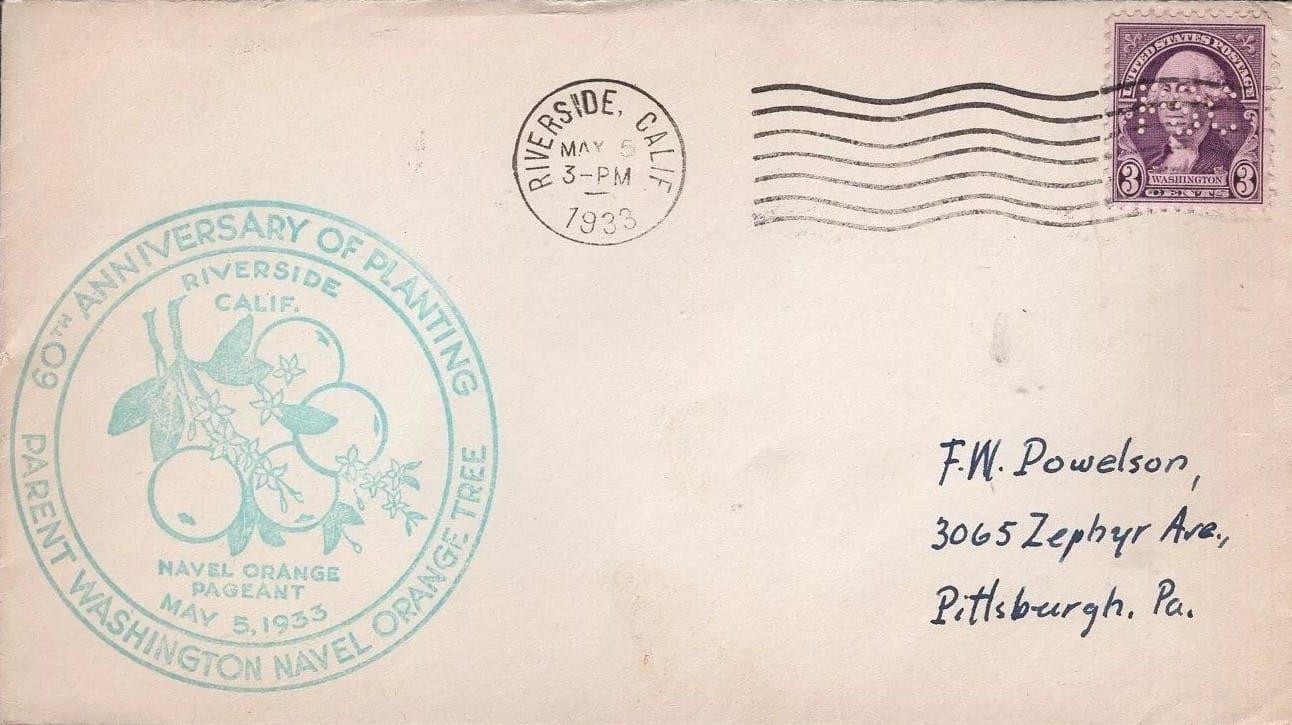
Visitors to Riverside for the parade and events were encouraged to visit the one surviving parent navel orange tree on the corner of Magnolia Avenue and Arlington Avenue.
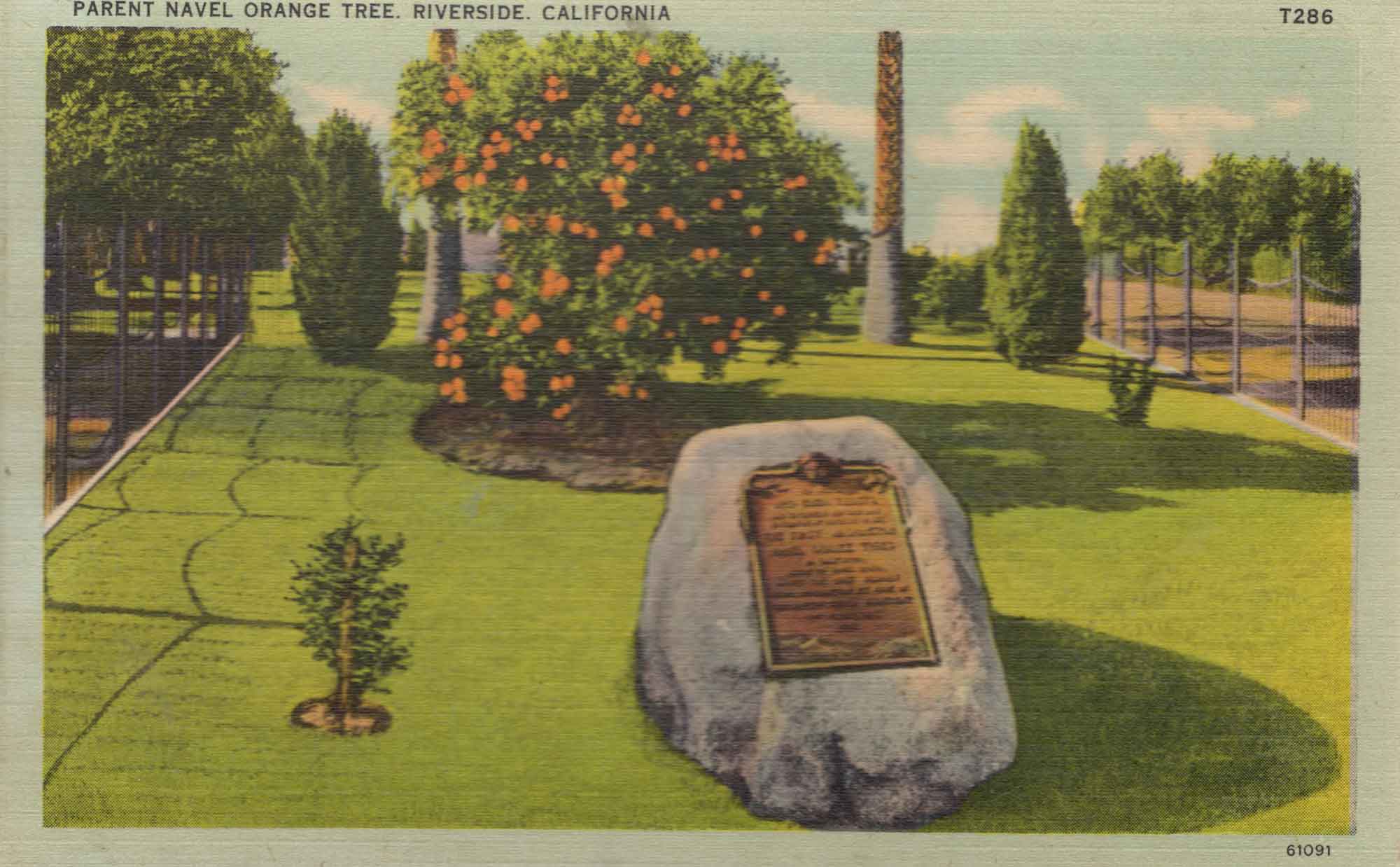
The Second Annual Riverside Orange Pageant rolled out a parade that exceeded the first year. Floats, bands, equestrian riders, automobiles, and other features extended approximately four miles in length and took nearly two hours to pass before any one point. A viewing stand was erected on the lawn in front of the Riverside County Courthouse on Main Street. Standard Oil Company furnished a sound truck announcing each participant as they went by. The Queen for the 1934 Pageant was Miss Virginia Nebett from Riverside Junior College, accompanied by a court of five charming young ladies.
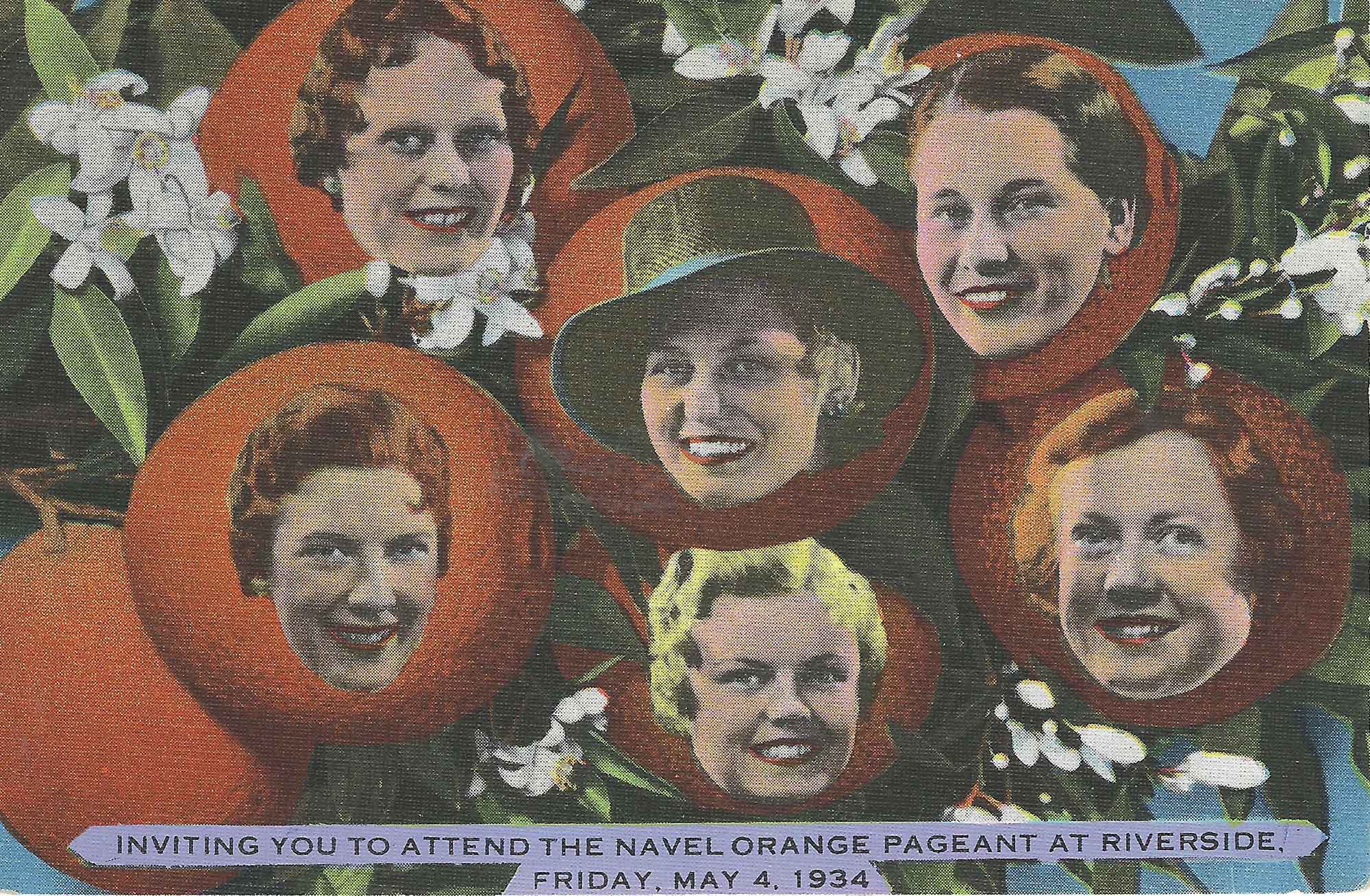
For the May 4, 1934, celebration, other activities preceded the parade. Starting at 8:30 that morning, the three junior high schools performed a historical pageant followed by field activities for the city’s students. The parade began at 2:00 p.m.p.m. and again featured many colorfully decorated floats with orange themes. That year, the parade traveled north on Main Street past the courthouse and downtown before returning south on Market Street.
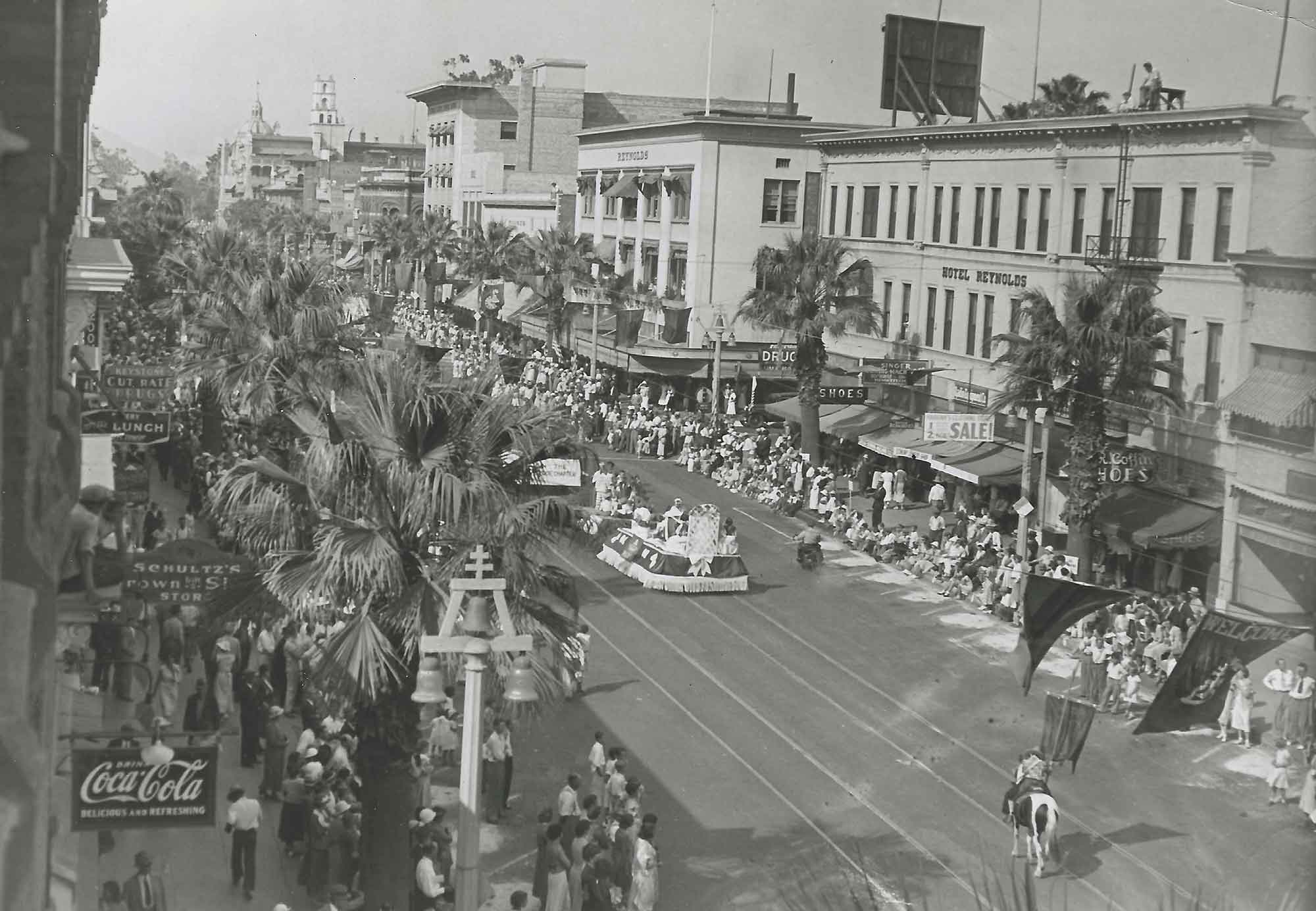
The city entered two floats, one for the electric light department and one for the water department, both vital for the citrus industry. The water department entry featured the early distribution of water to the citrus orchards, while the Electric Department showed the high-voltage system used in the city.
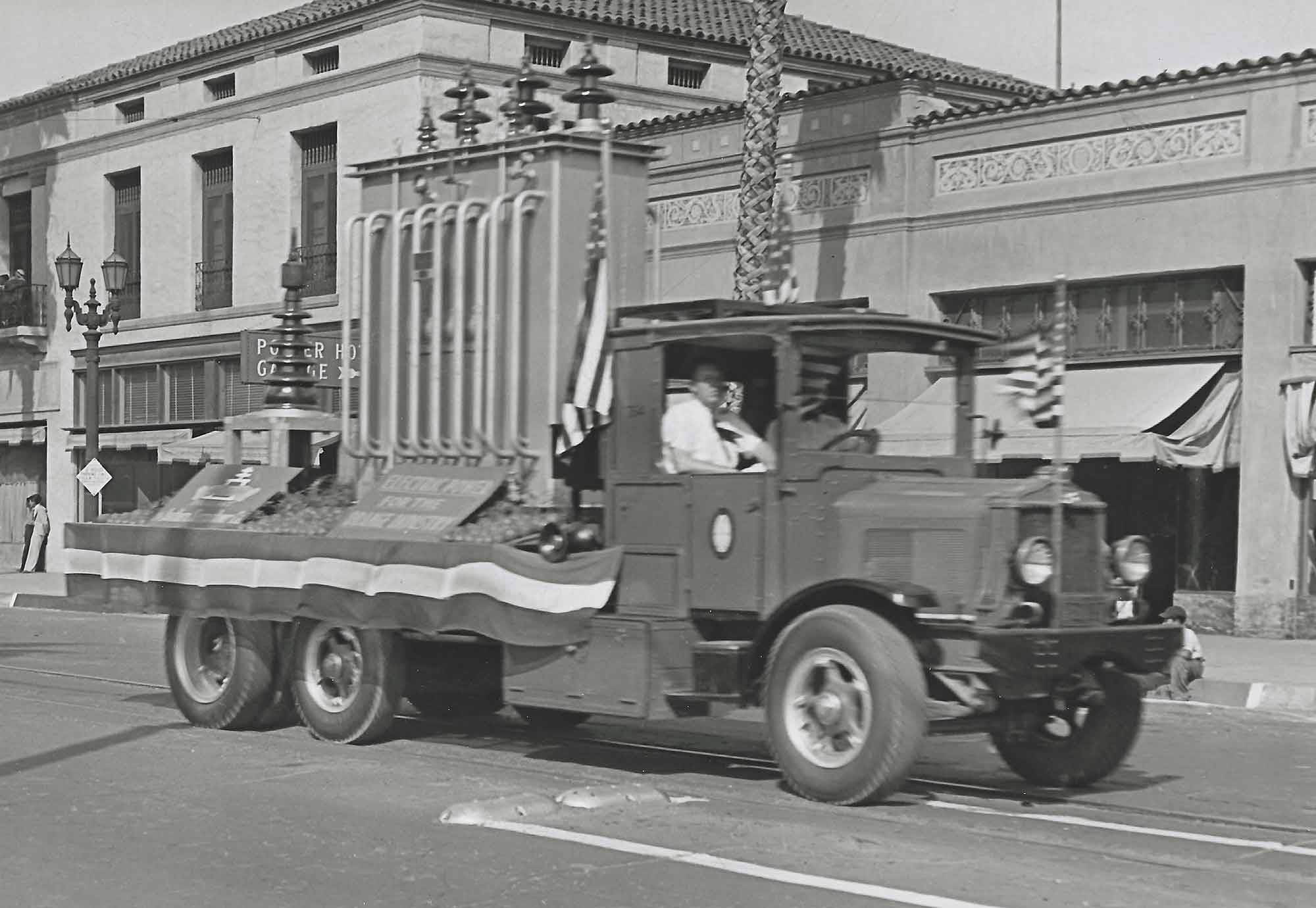
The float entered by the Riverside American Legion must have been a favorite for many, both young and old. A train engine, followed by a boxcar and a caboose holding several children, was caught in a photo taken as the parade passed the former Potter Hotel at 3970 Market Street across from White Park. The railroads played an important role in shipping oranges to far-away markets.
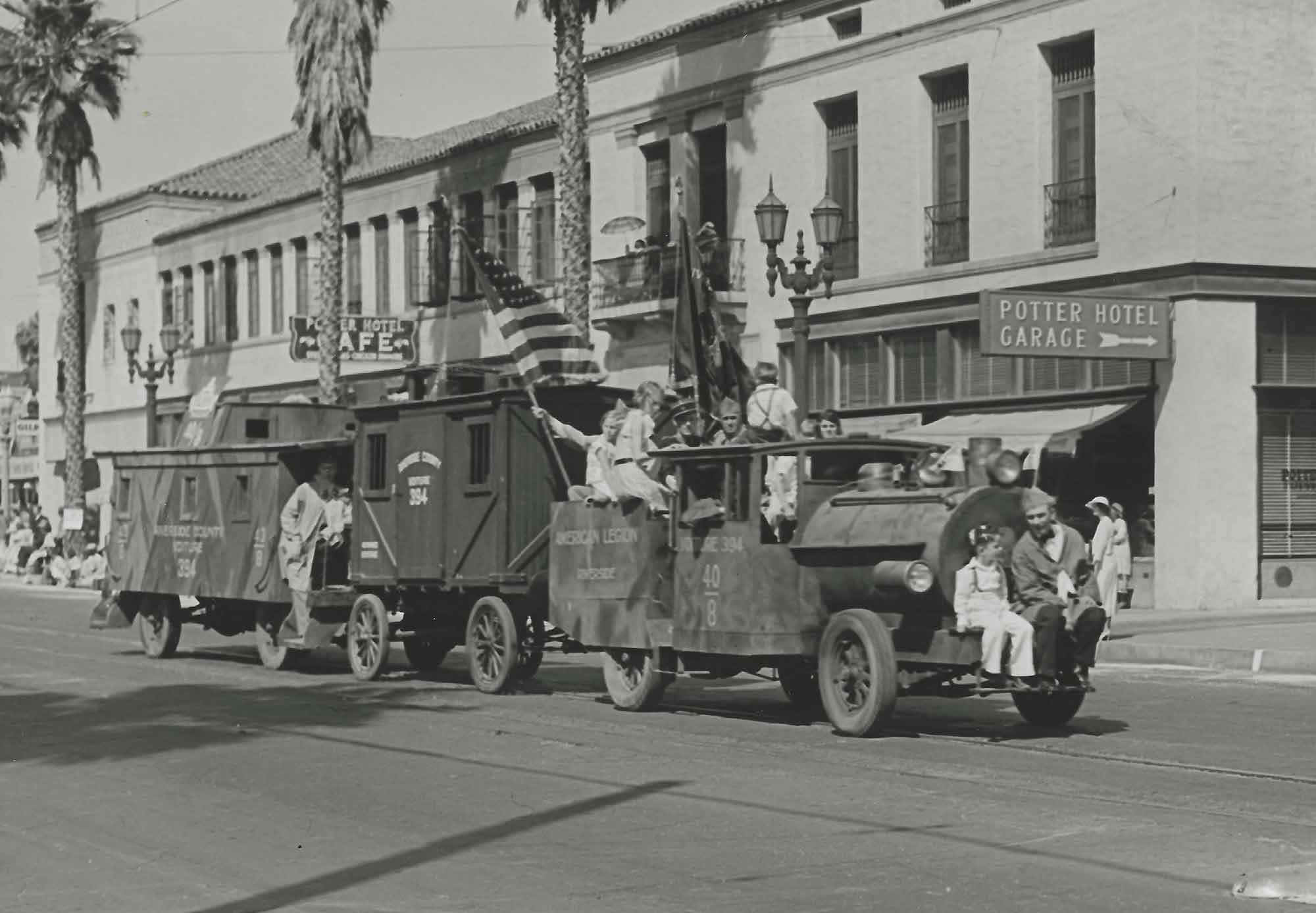
The dream to make the Riverside Orange Pageant rival the Pasadena Rose Bowl Parade never materialized. In the January 1935 Chamber of Commerce meeting, the thoughts were expressed that although the pageant was a great success and brought much attention to Riverside, the groups sponsoring the event were too small and unable to carry out such a large venture annually. In 1937, the suggestion was made to have a celebration every five or ten years and aim for one in 1938, the sixth-fifth anniversary. However, in 1938, the plans were pushed once more to 1939. The ensuing years came and went, and the two extravagant parades in 1933 and 1934 were not repeated.
Today, the one original parent navel orange tree still resides at Magnolia and Arlington Avenues. A tablet commemorates Eliza Tibbets and the first planting of the navel orange trees. Also in Riverside is the California Citrus State Historic Park, which remembers Riverside’s important orange industry. But there is no longer an annual event such as the pageant parade marking this important part of our rich history.
Let us email you Riverside's news and events every morning. For free!